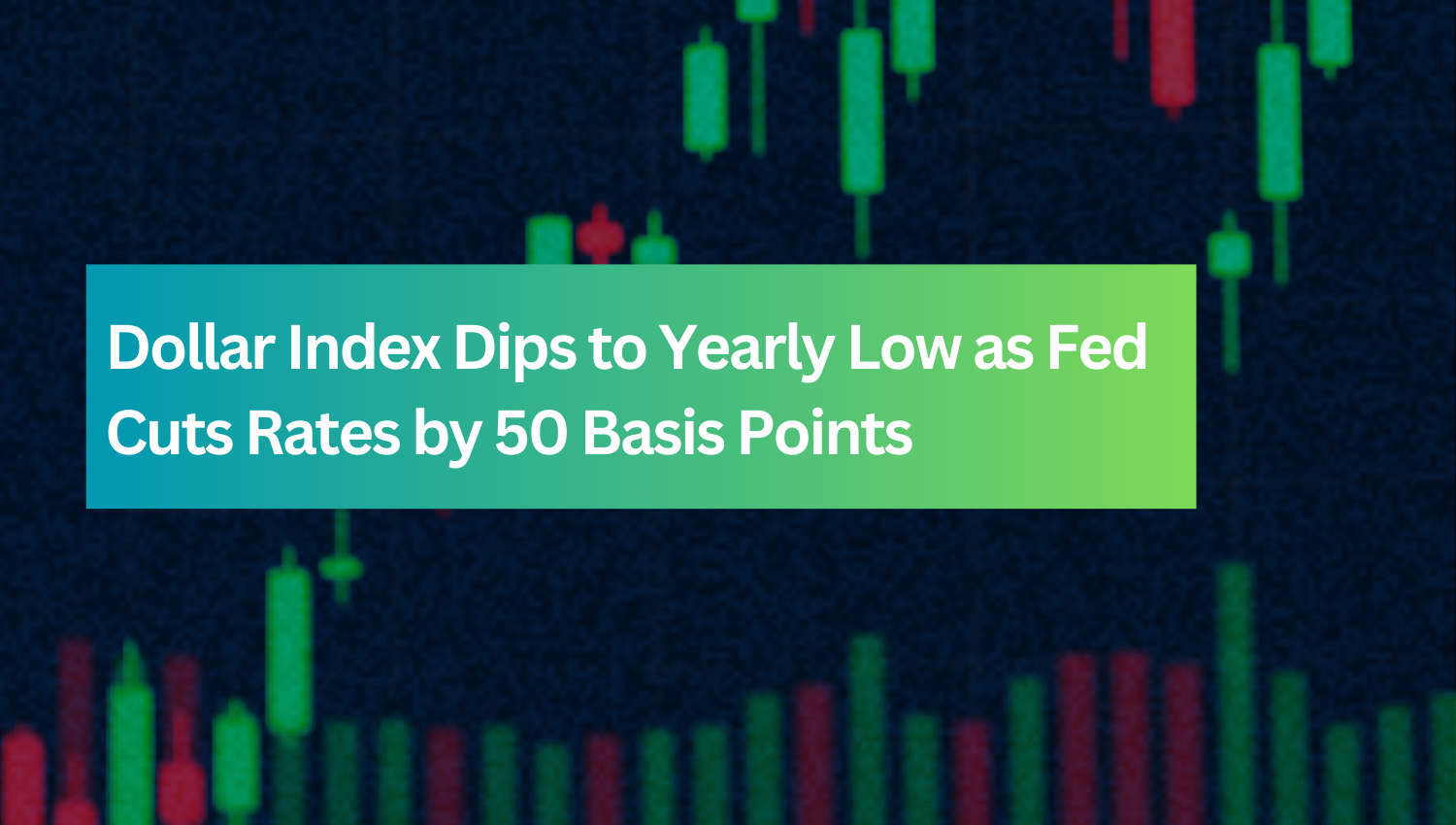Macro Outlook

Dollar Index Dips to Yearly Low as Fed Cuts Rates by 50 Basis Points
The U.S. dollar index hit a new year-to-date low after the Federal Reserve surprised markets with a 50 basis point rate cut, reducing the policy rate to a range of 4.75%-5.00%. The unexpected move surpassed market expectations, as the Fed's dot plot indicated downward revisions in rate projections across multiple tenors. The central bank signaled that rates are expected to end 2024 at 4.4% and 2025 at 3.4%, pointing to a gradual path toward further easing. Federal Reserve Chair Jerome Powell acknowledged signs of a cooling labor market but emphasized a cautious approach, stating that the committee was not in a rush to make further moves.
Treasury yields dipped in response to the rate cut announcement, though the yield curve steepened as the market adjusted to the policy shift. The Fed's dovish stance had a notable impact across financial markets, with investors adjusting their expectations for future rate actions.
Global Focus Shifts to Bank of England and Bank of Japan
Attention now turns to other central banks, particularly the Bank of England (BoE) and the Bank of Japan (BoJ), as markets assess global monetary policy. The BoE is expected to hold rates steady after the latest data showed no change in UK inflation from July, a decision that could shape the near-term direction of the British pound. Market sentiment suggests traders are betting on steady BoE policy, contributing to the pound’s recent strength.
Meanwhile, the BoJ is widely expected to maintain its current rates as it evaluates the impact of previous rate hikes. In the U.S., fiscal policy developments could also come into play, with the House of Representatives set to vote on a spending bill to prevent an October government shutdown, which may impact broader risk sentiment.
Currency Markets React to Fed’s Dovish Stance
Following the Fed’s rate cut, the U.S. dollar weakened across the board. The euro gained 0.31% against the dollar (EUR/USD), the British pound rose 0.68% (GBP/USD), and the Australian dollar climbed 0.44% (AUD/USD). In contrast, the yen strengthened as USD/JPY fell 0.83%, driven by profit-taking and a shift toward risk-off sentiment after the Fed’s dovish signals.
The British pound remains strong, supported by market expectations of a steady policy stance from the Bank of England. Meanwhile, commodity currencies like the Australian dollar saw gains, benefiting from improved risk appetite and lower U.S. Treasury yields. Both the euro and the pound made notable gains, reflecting stronger sentiment and solid economic data.
Outlook: Dollar Weakness Likely to Persist, Geopolitical Risks in Focus
Looking ahead, the dollar may face continued weakness if the Fed maintains its dovish approach and signals further rate cuts. Currencies like the euro, pound, and yen are likely to strengthen if the Fed continues its easing path while other central banks, such as the BoE and BoJ, opt for steadier or tighter policy.
However, the dollar could see short-term support in the event of escalating geopolitical risks, particularly in the Middle East, which might drive safe-haven demand. The yen and Swiss franc could also benefit from these developments. Market participants will closely monitor Fed Chair Powell's upcoming speeches, along with key inflation data and potential fiscal policy shifts in the U.S., for any signs of change in the central bank's course.

